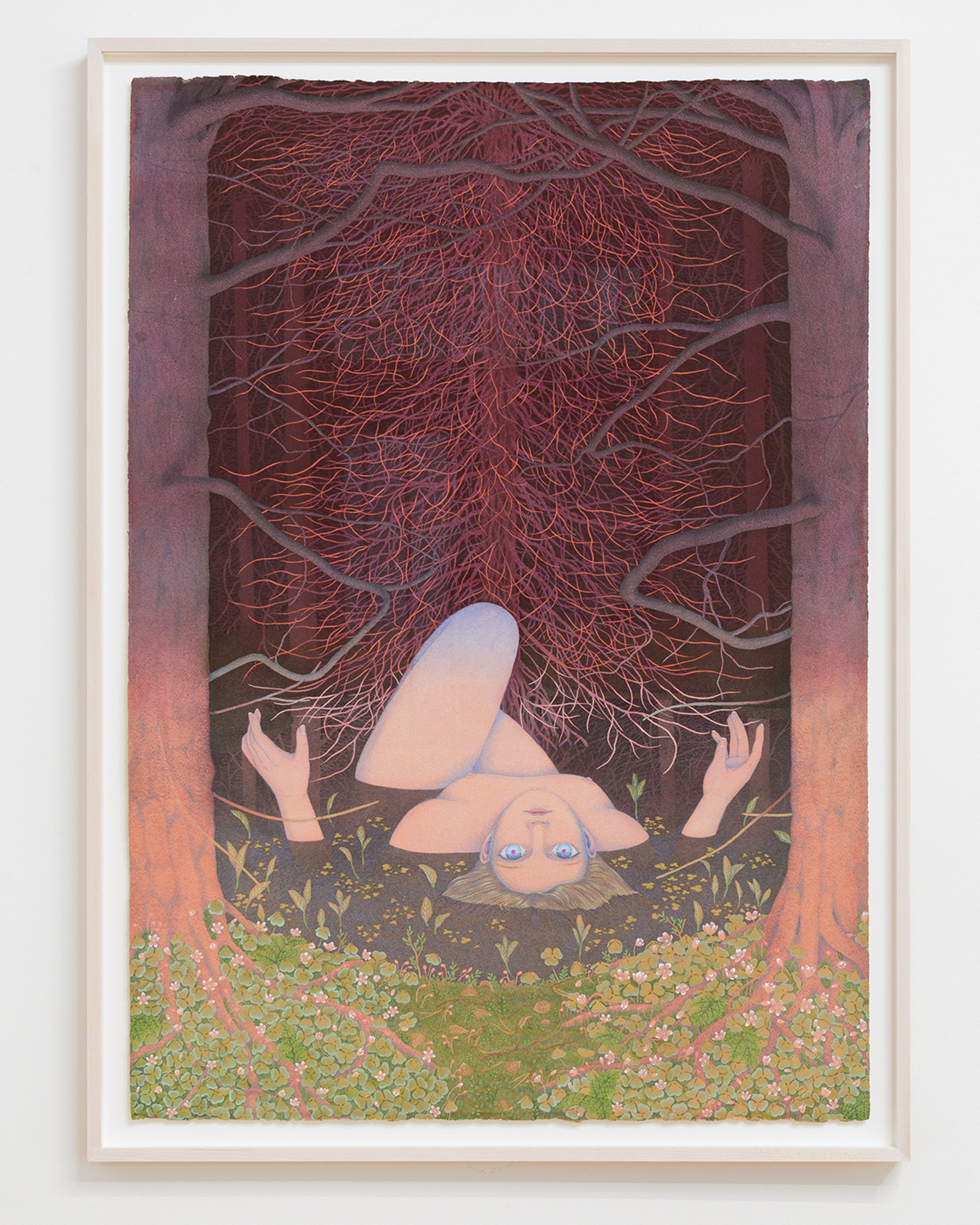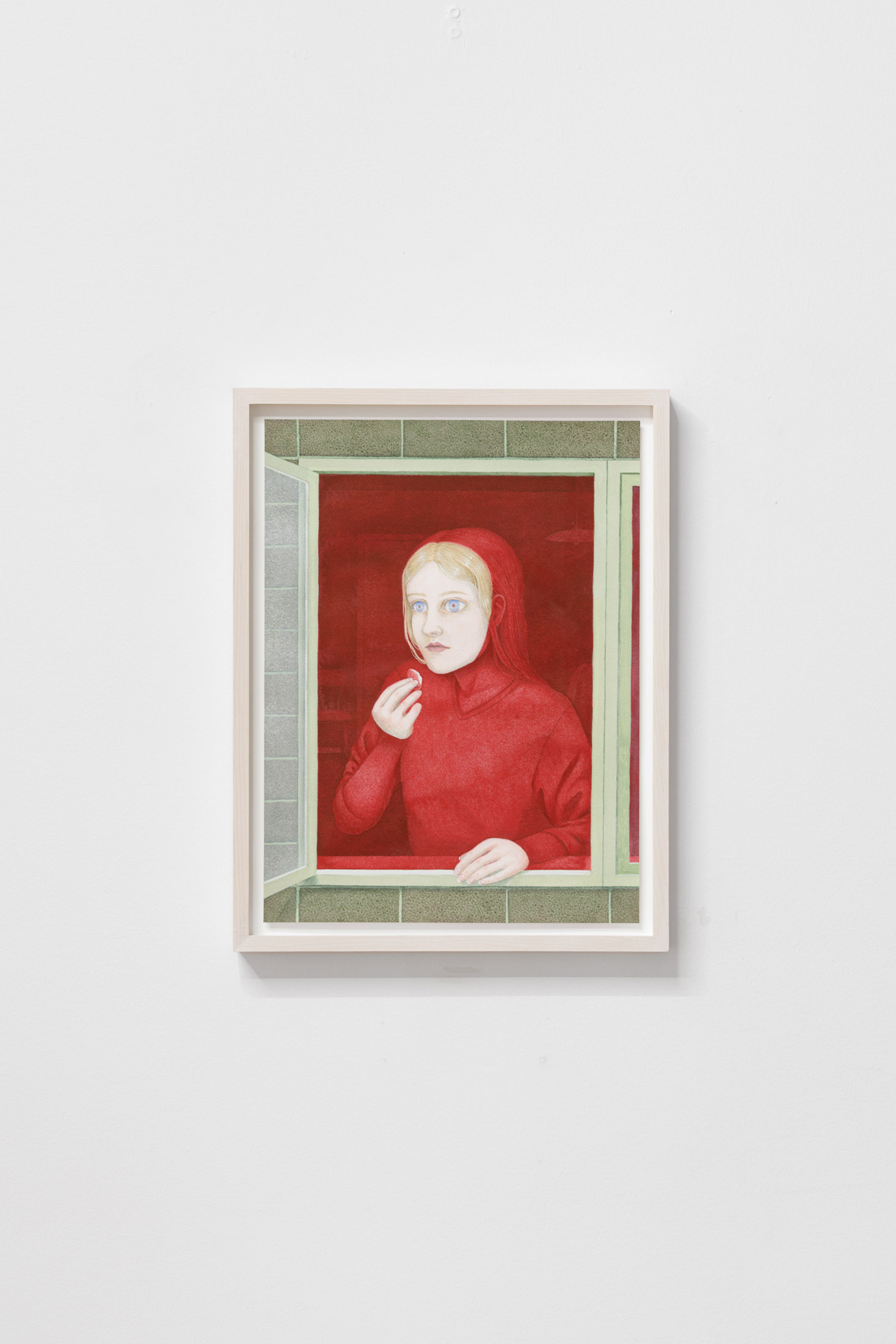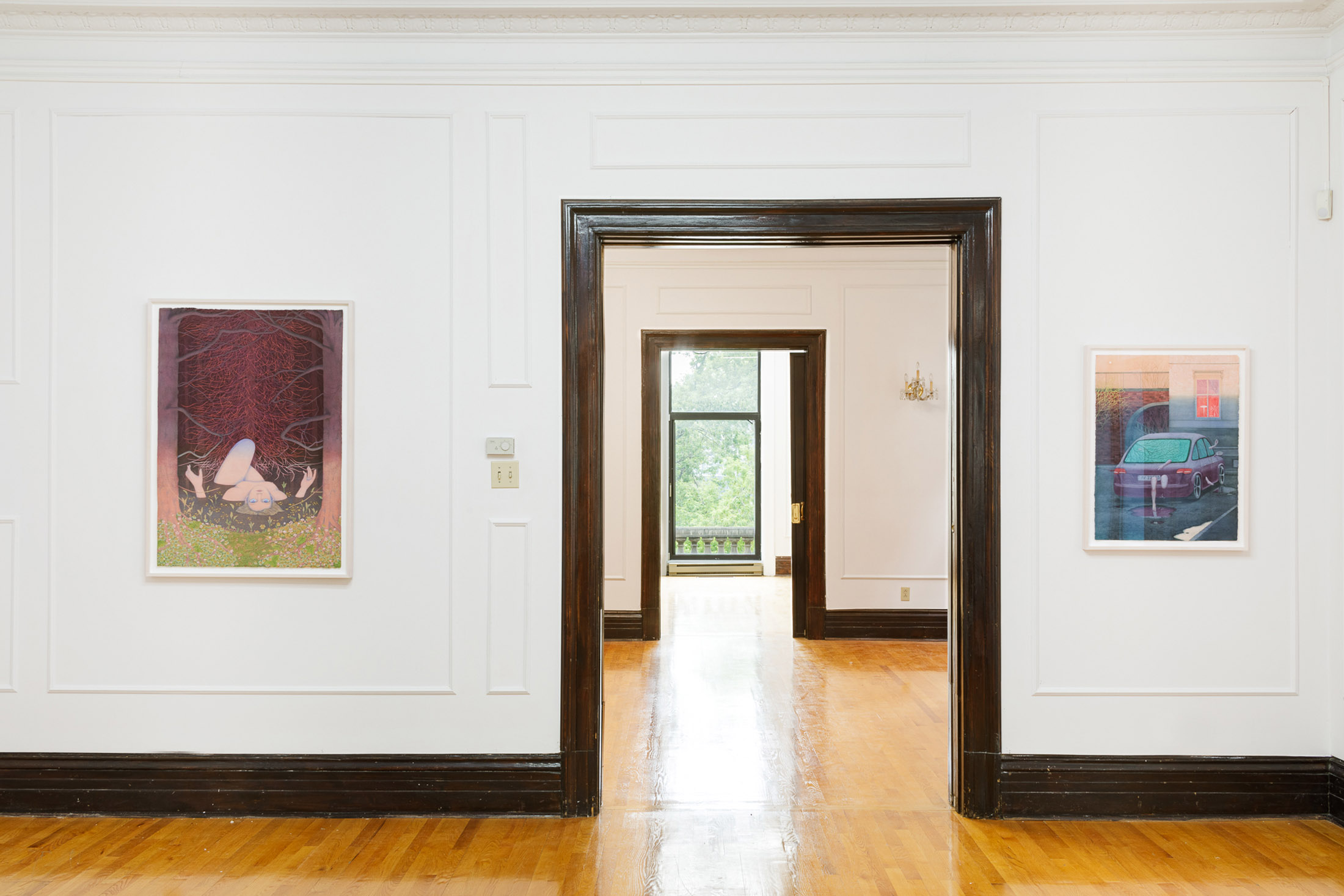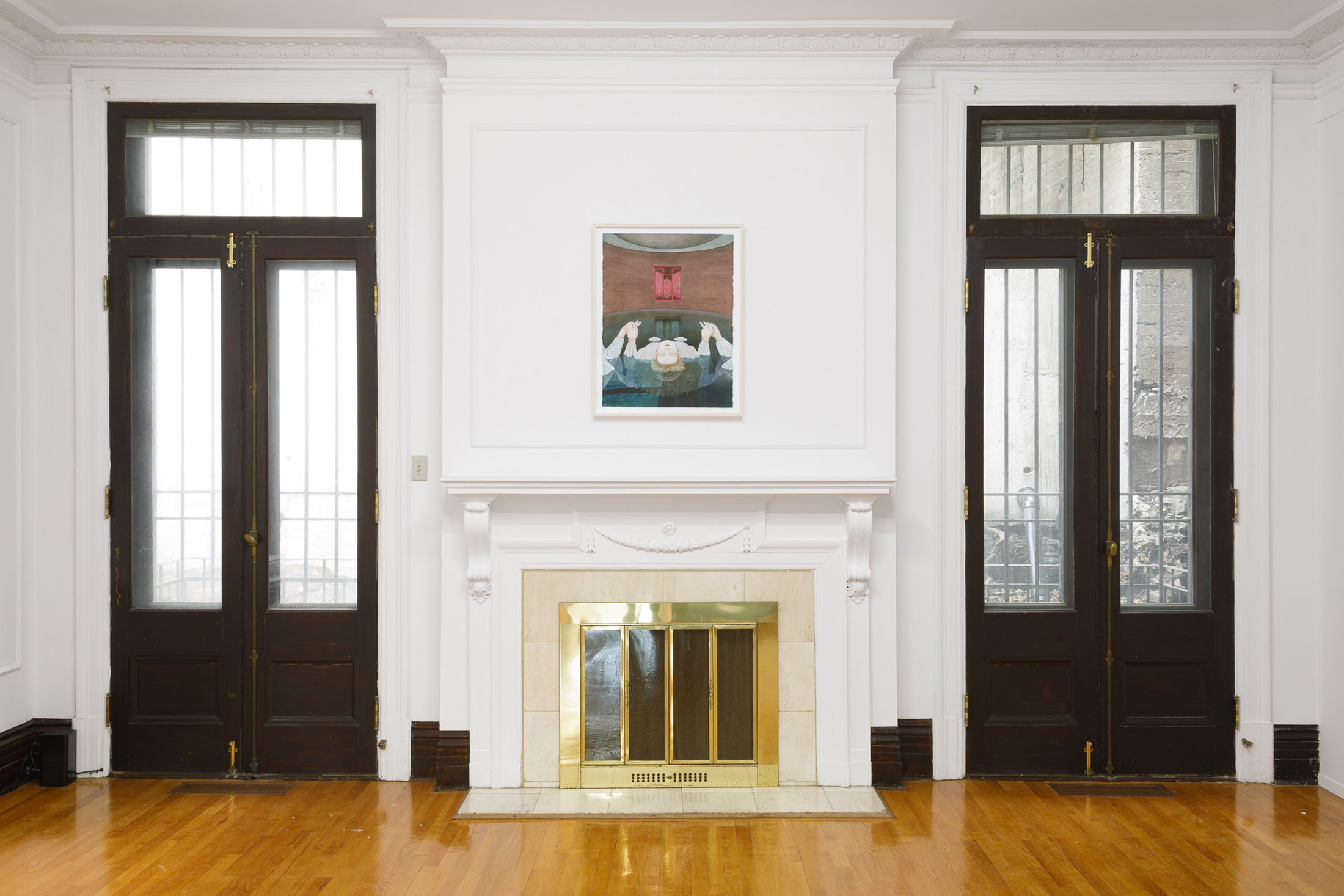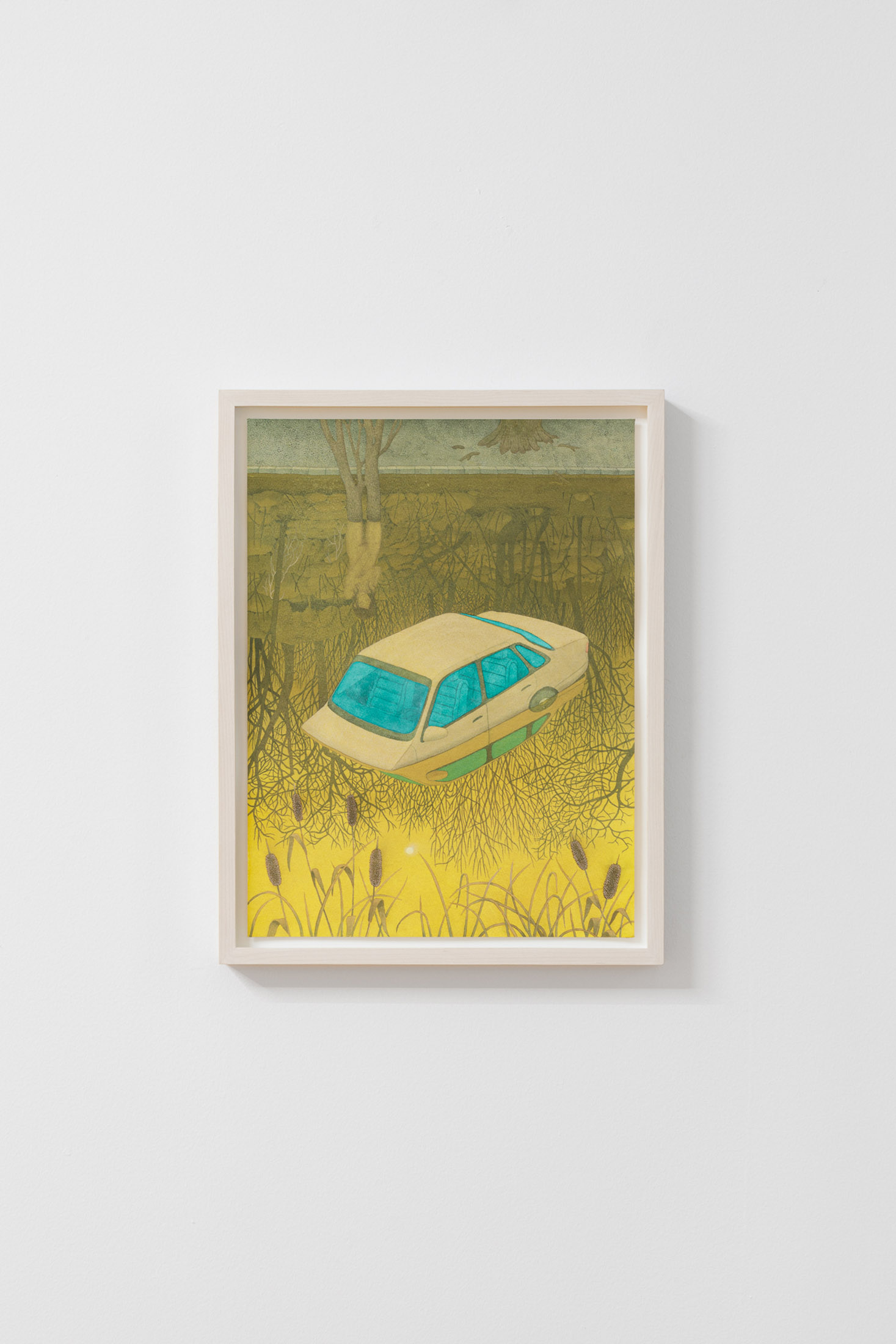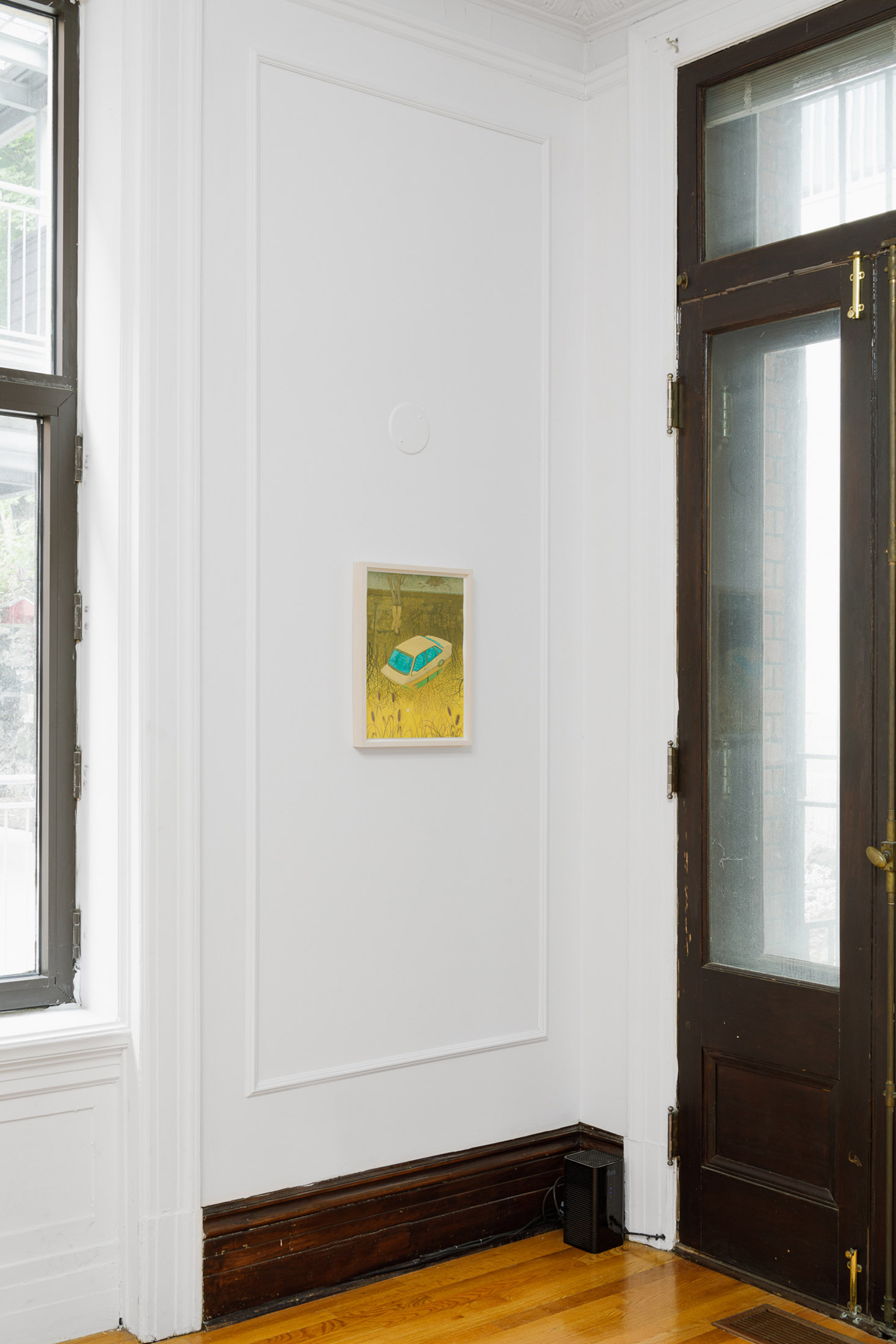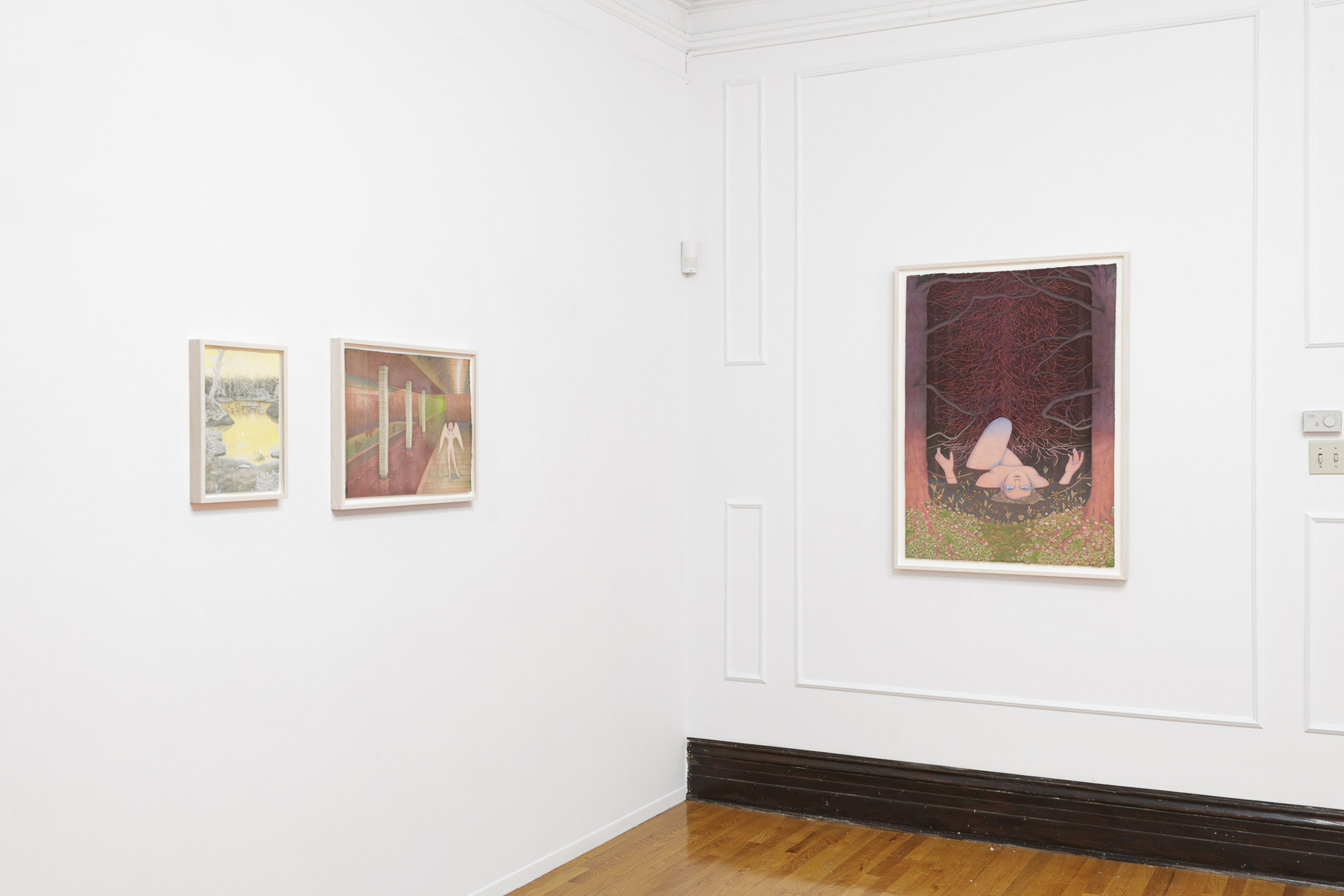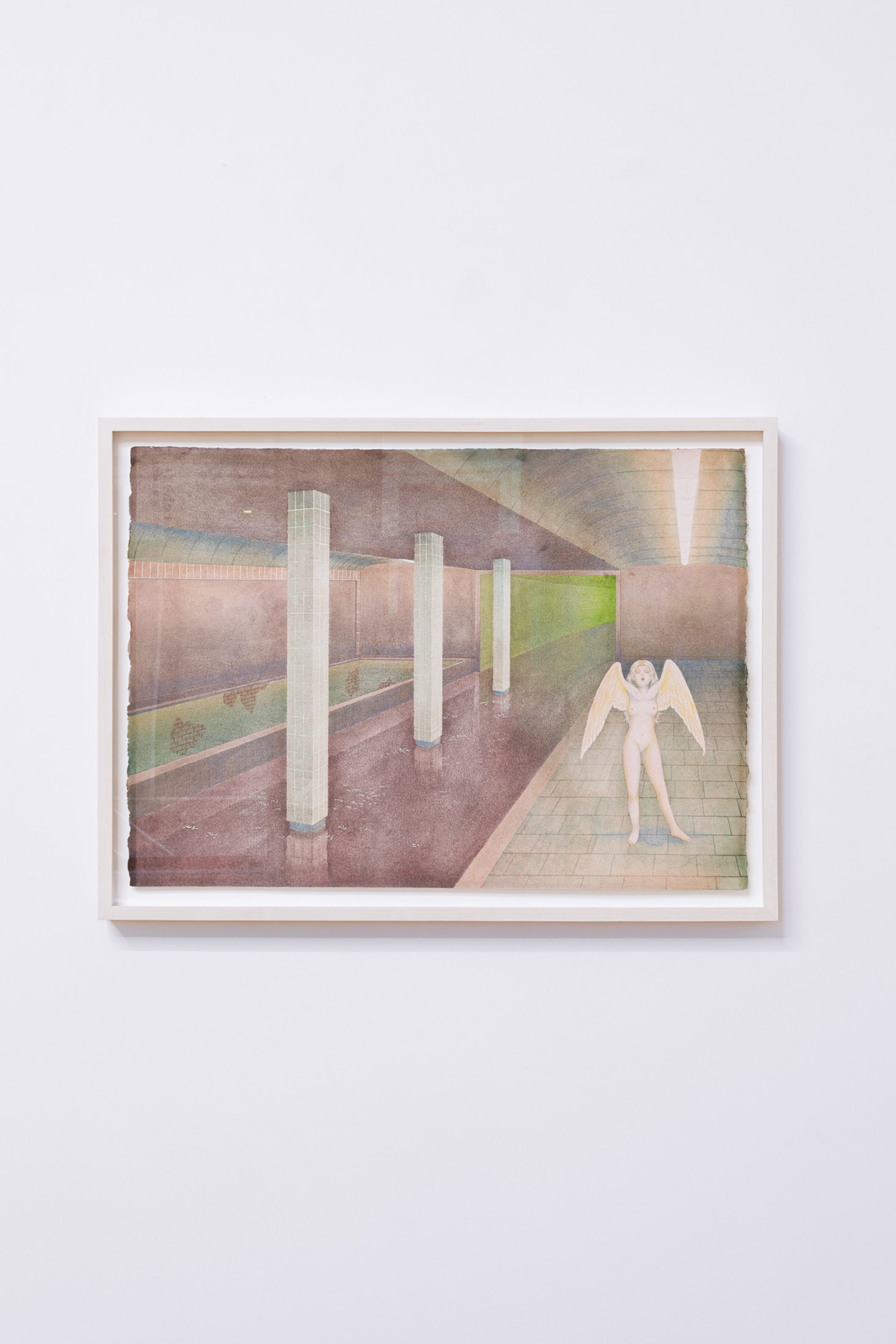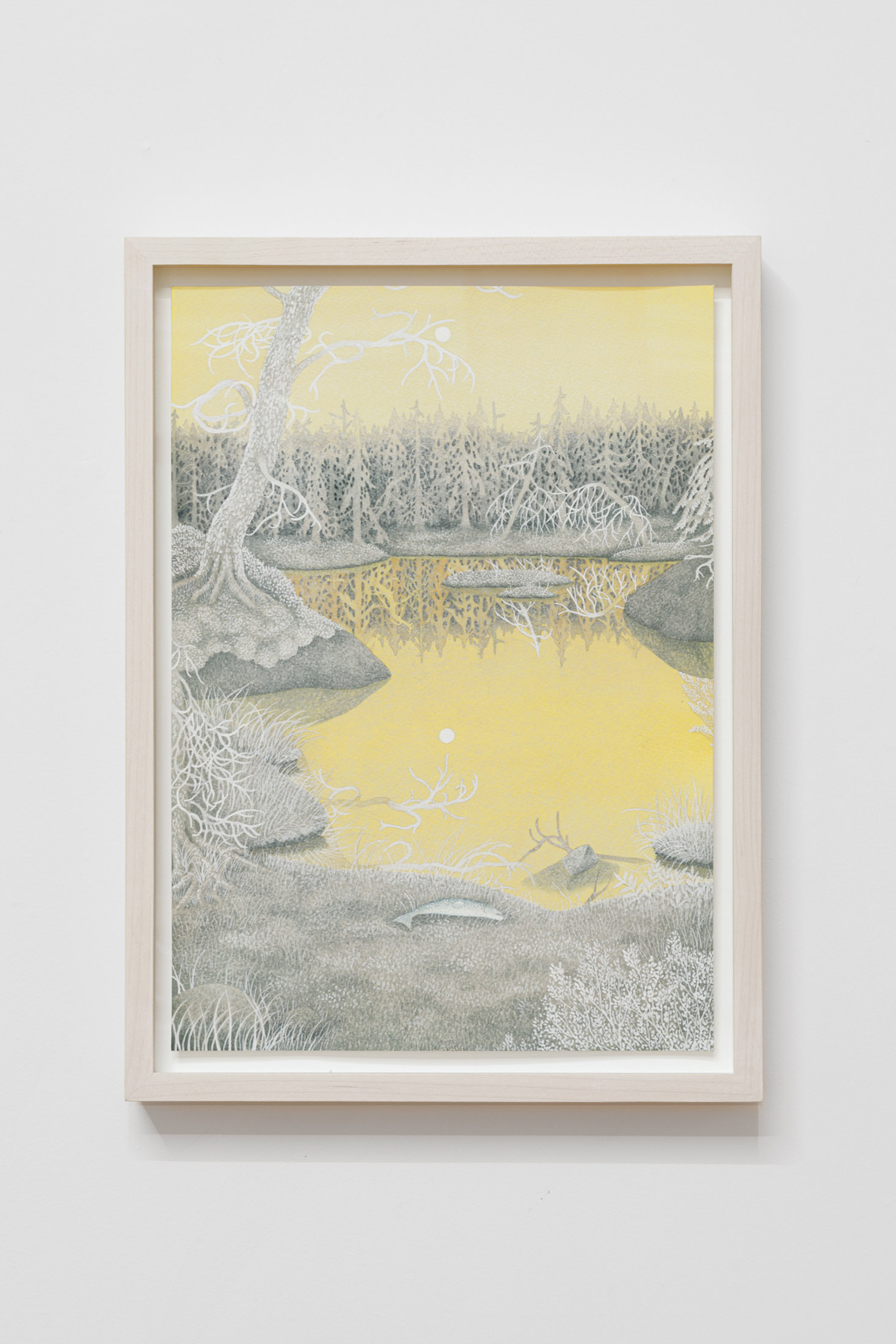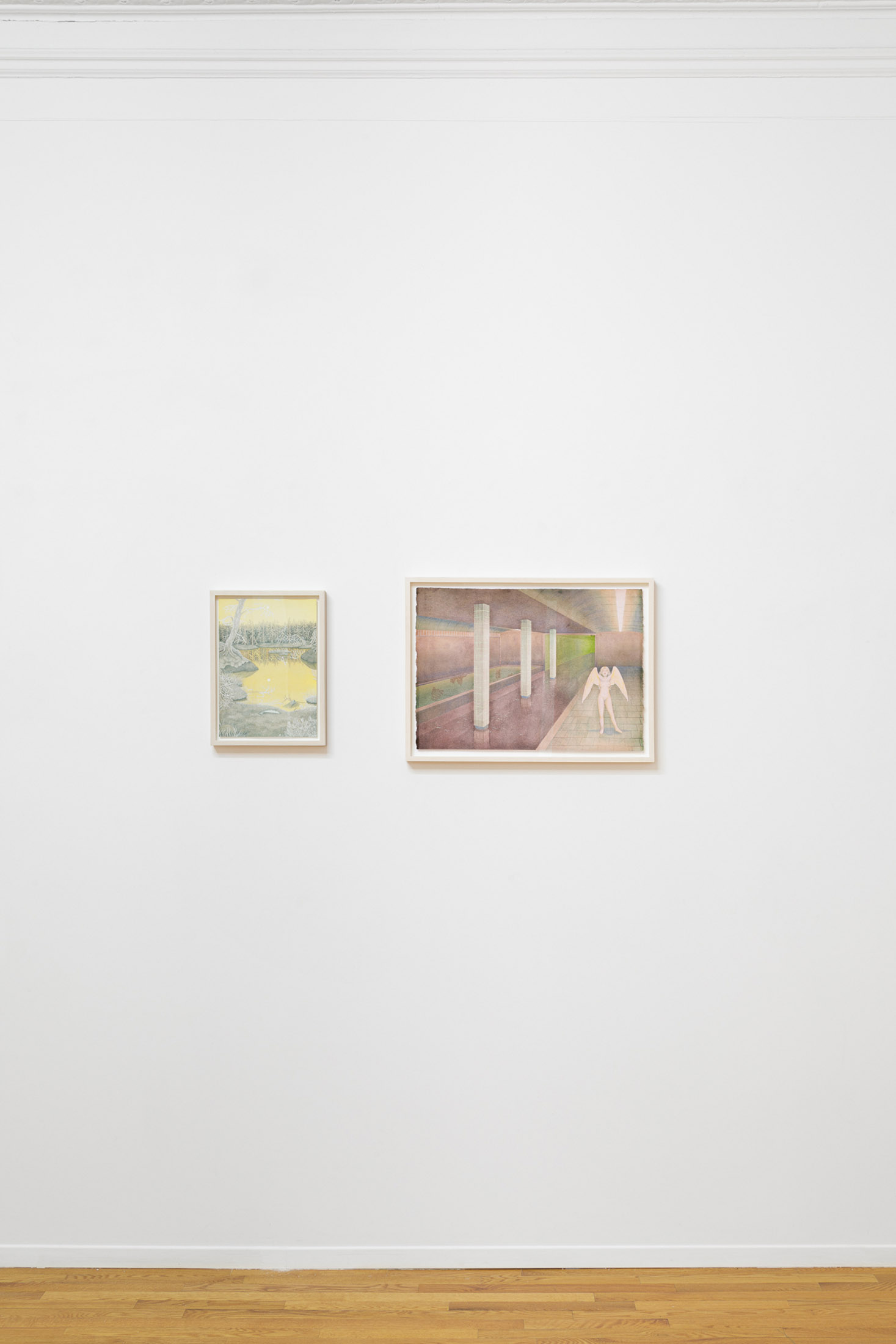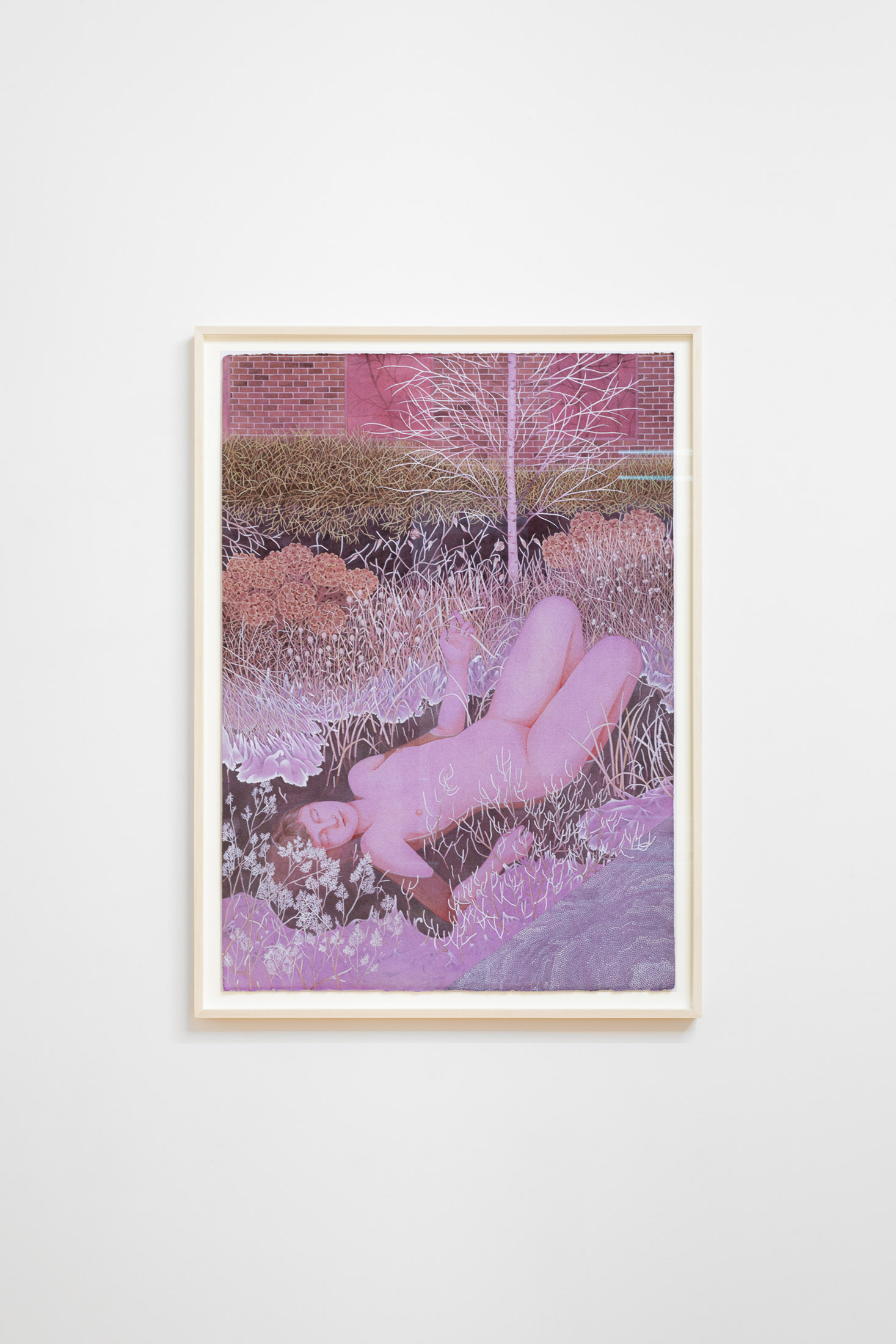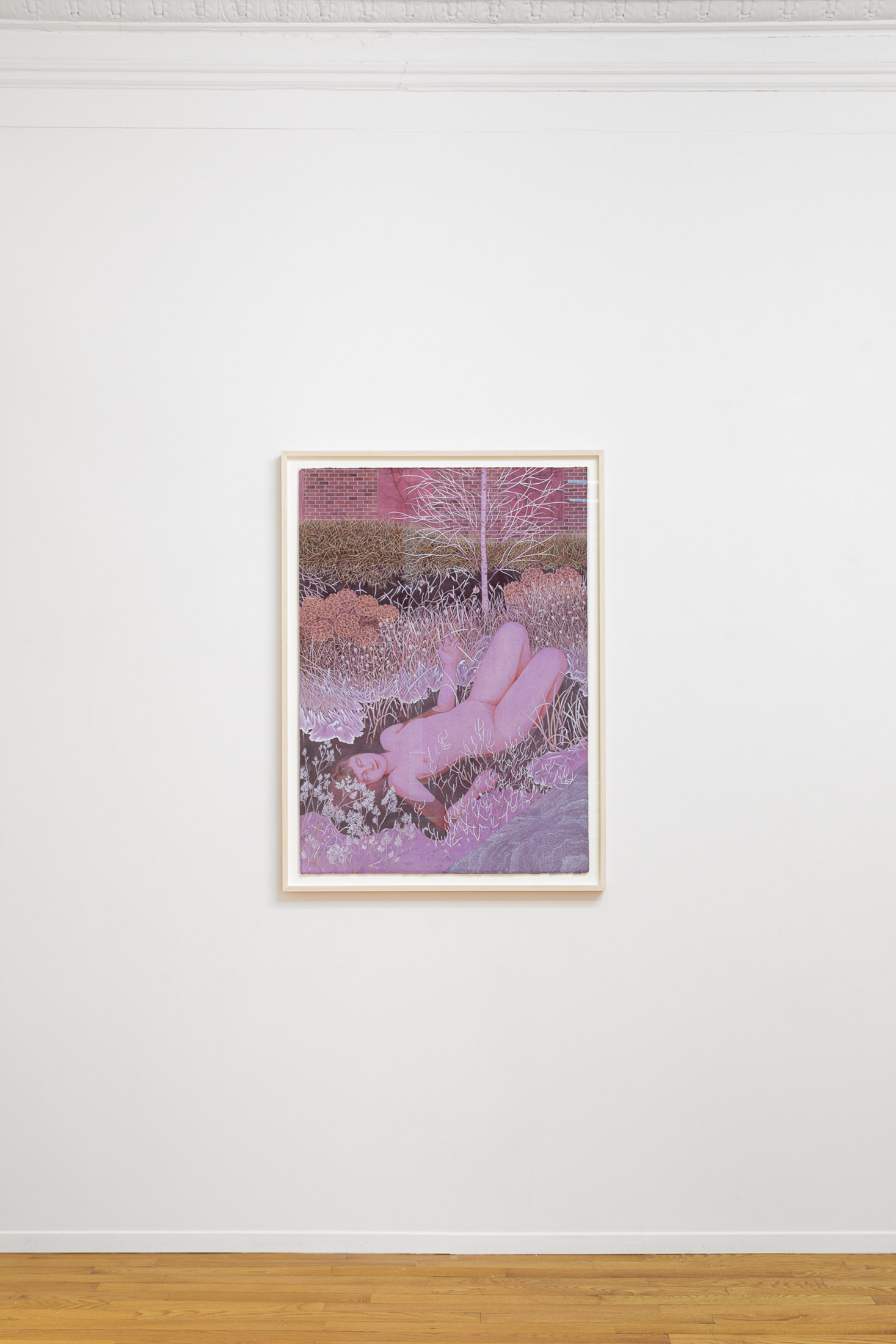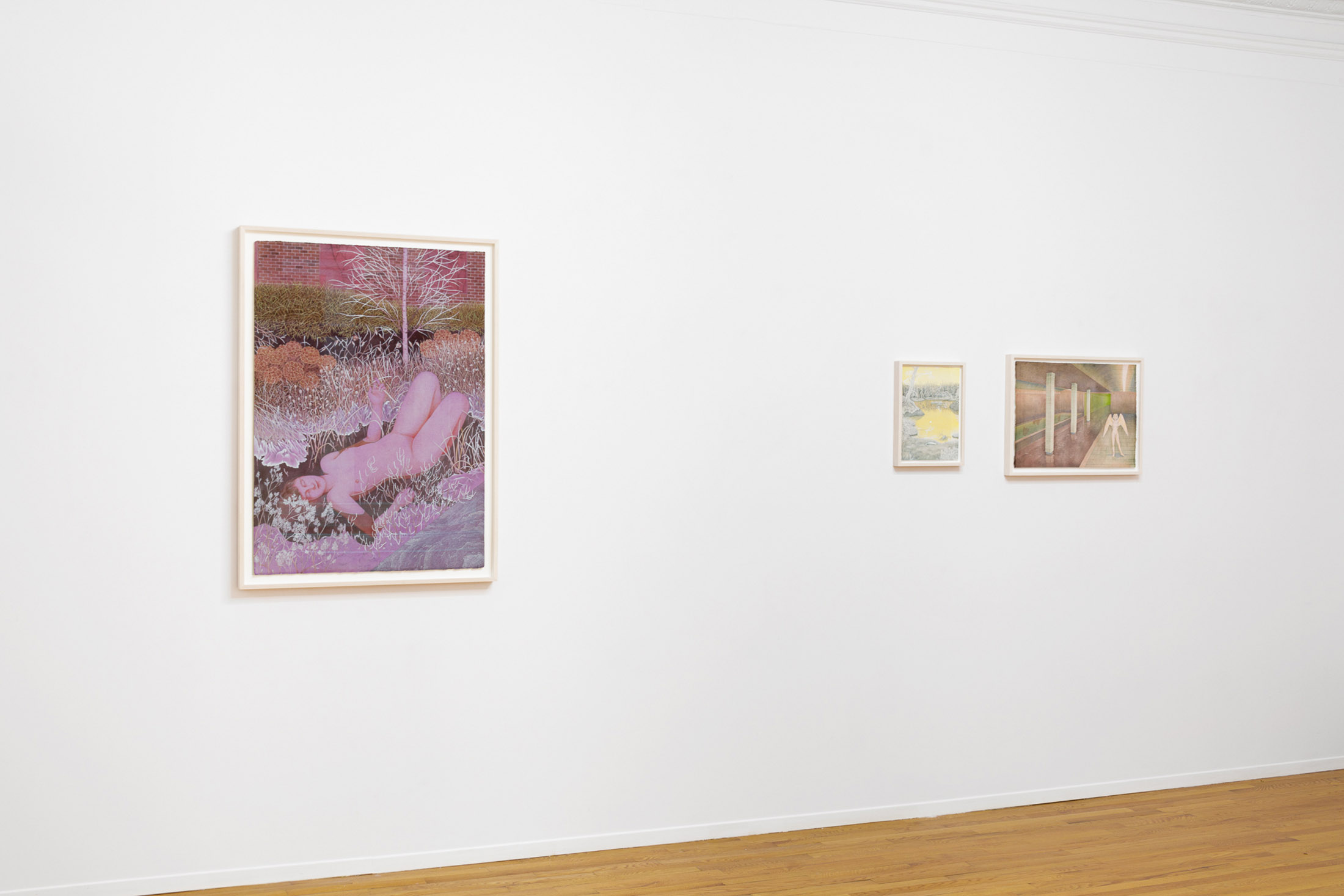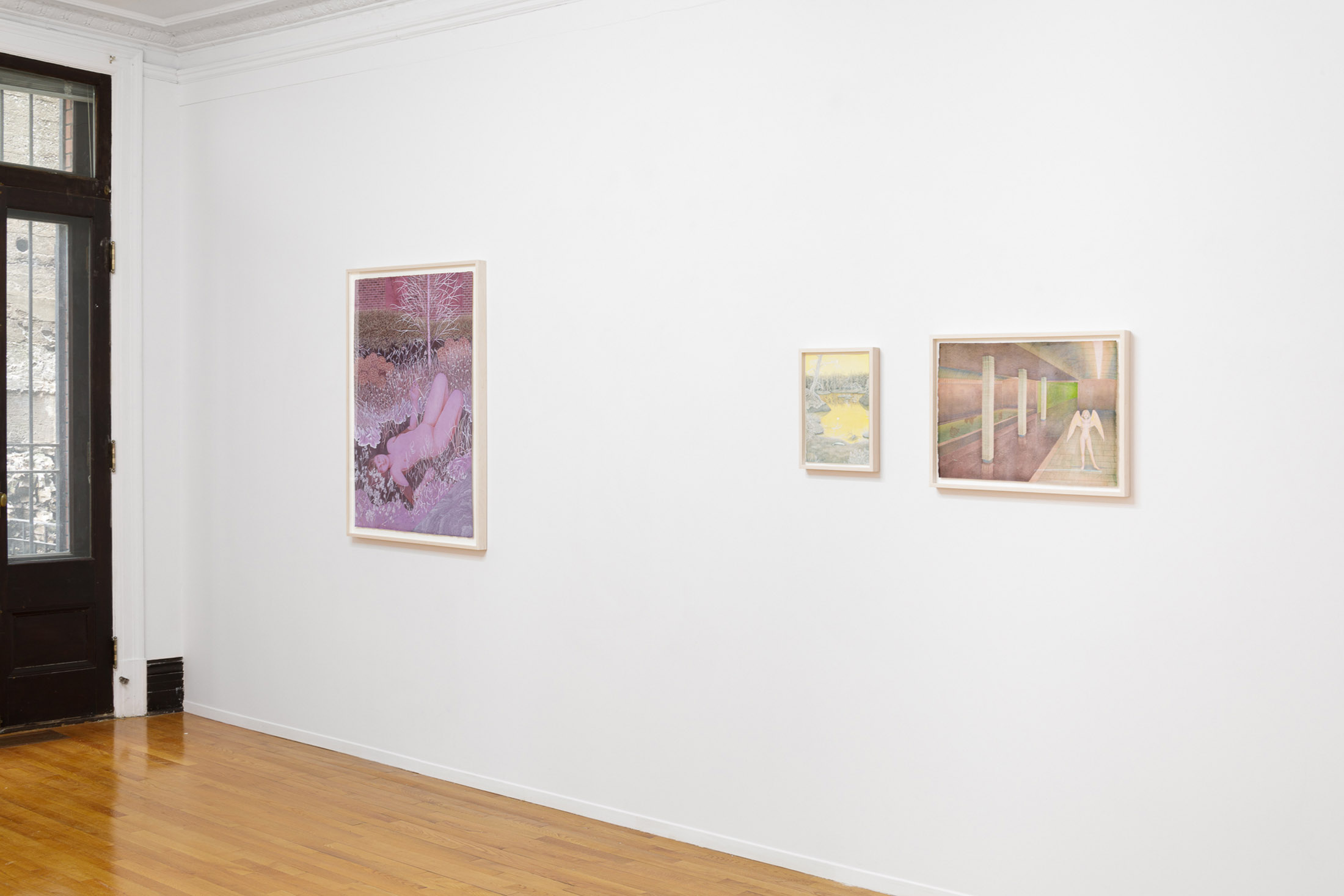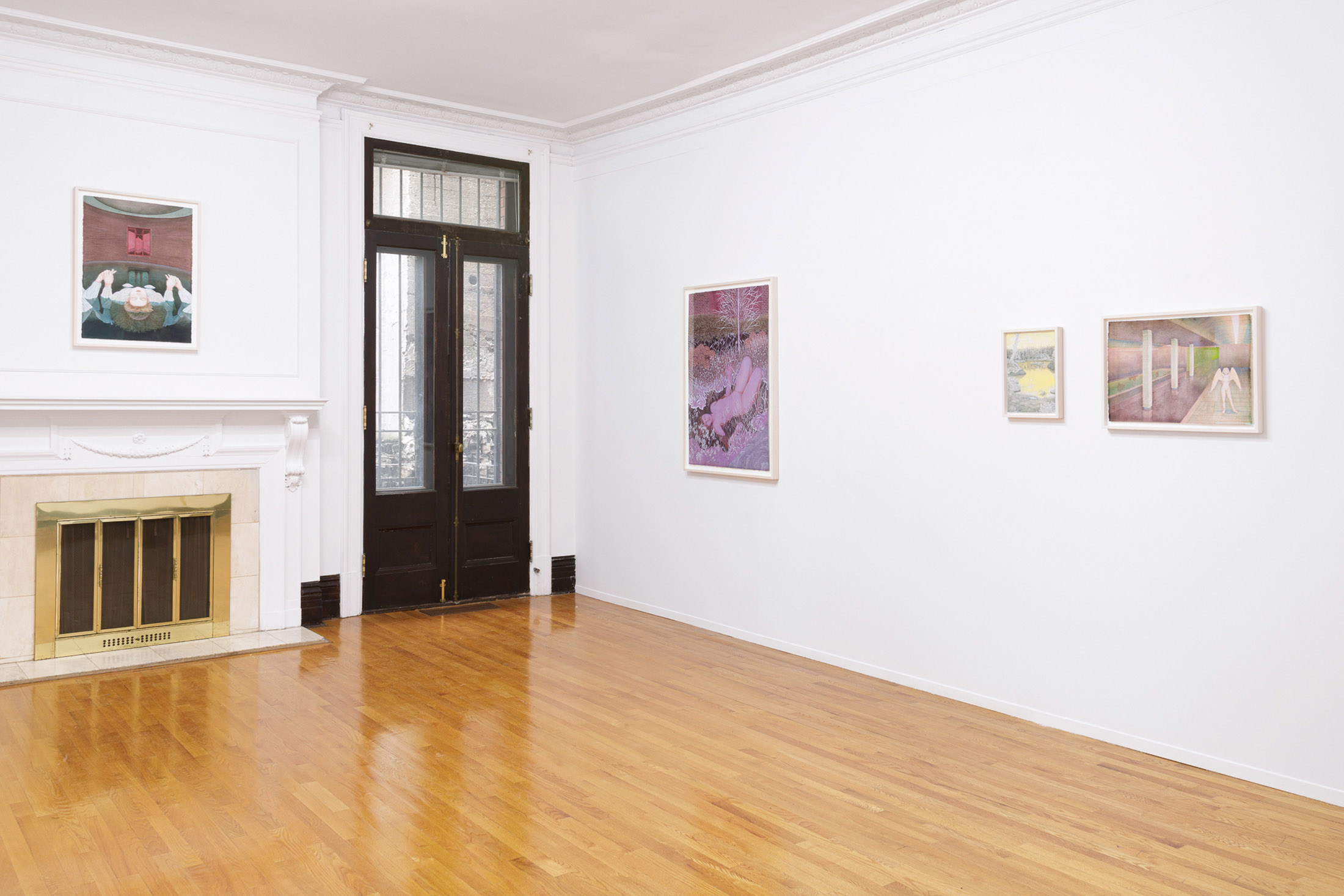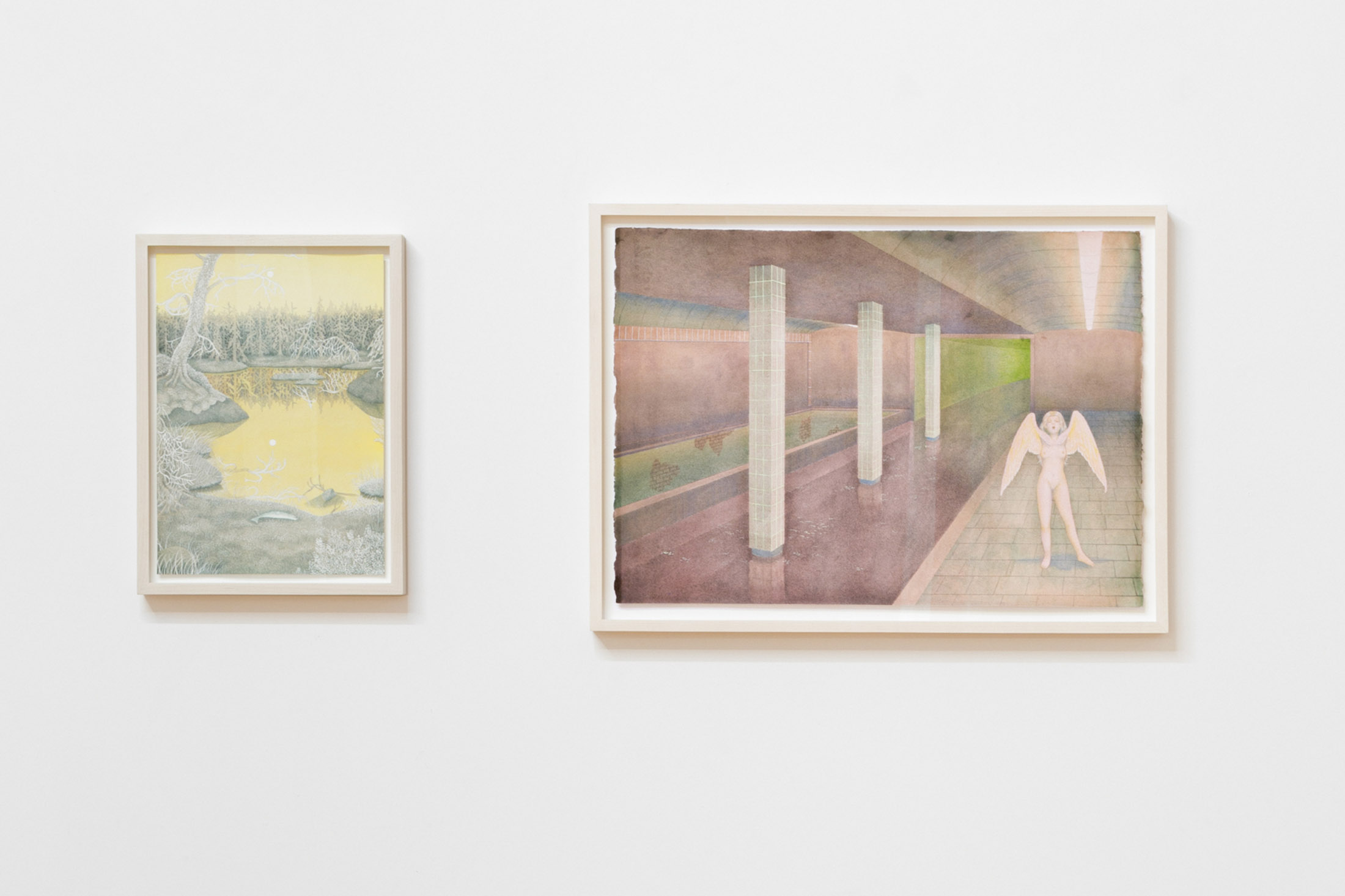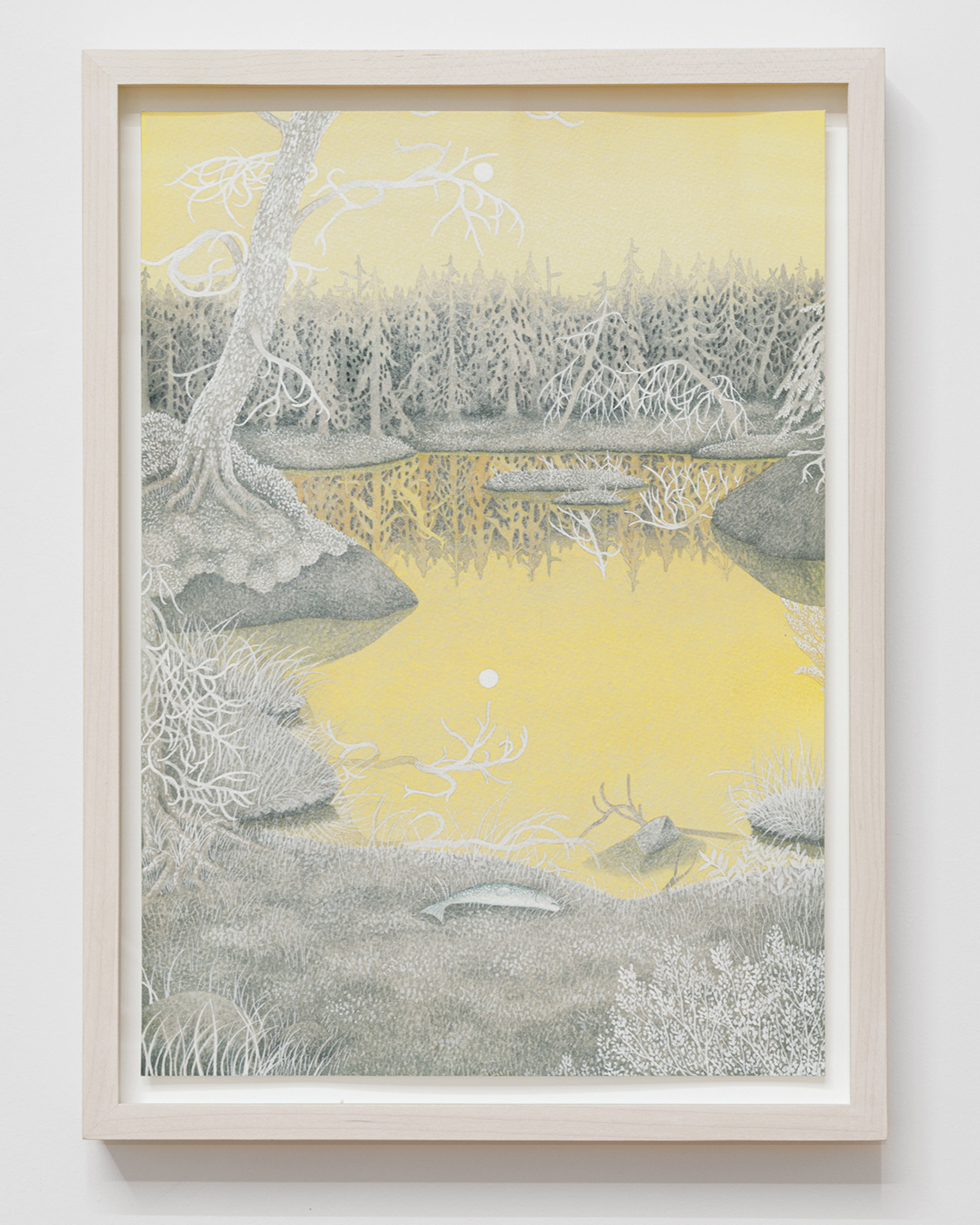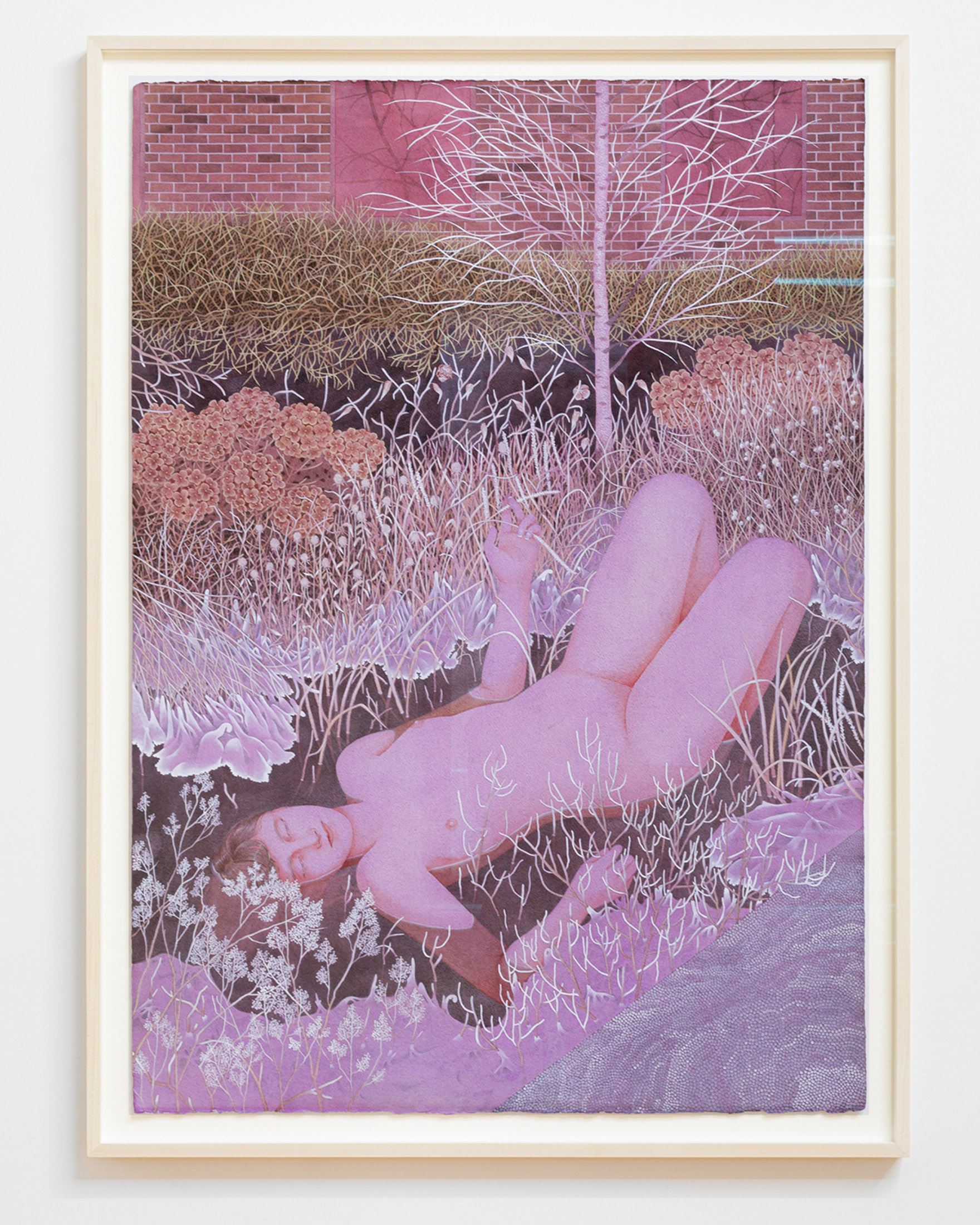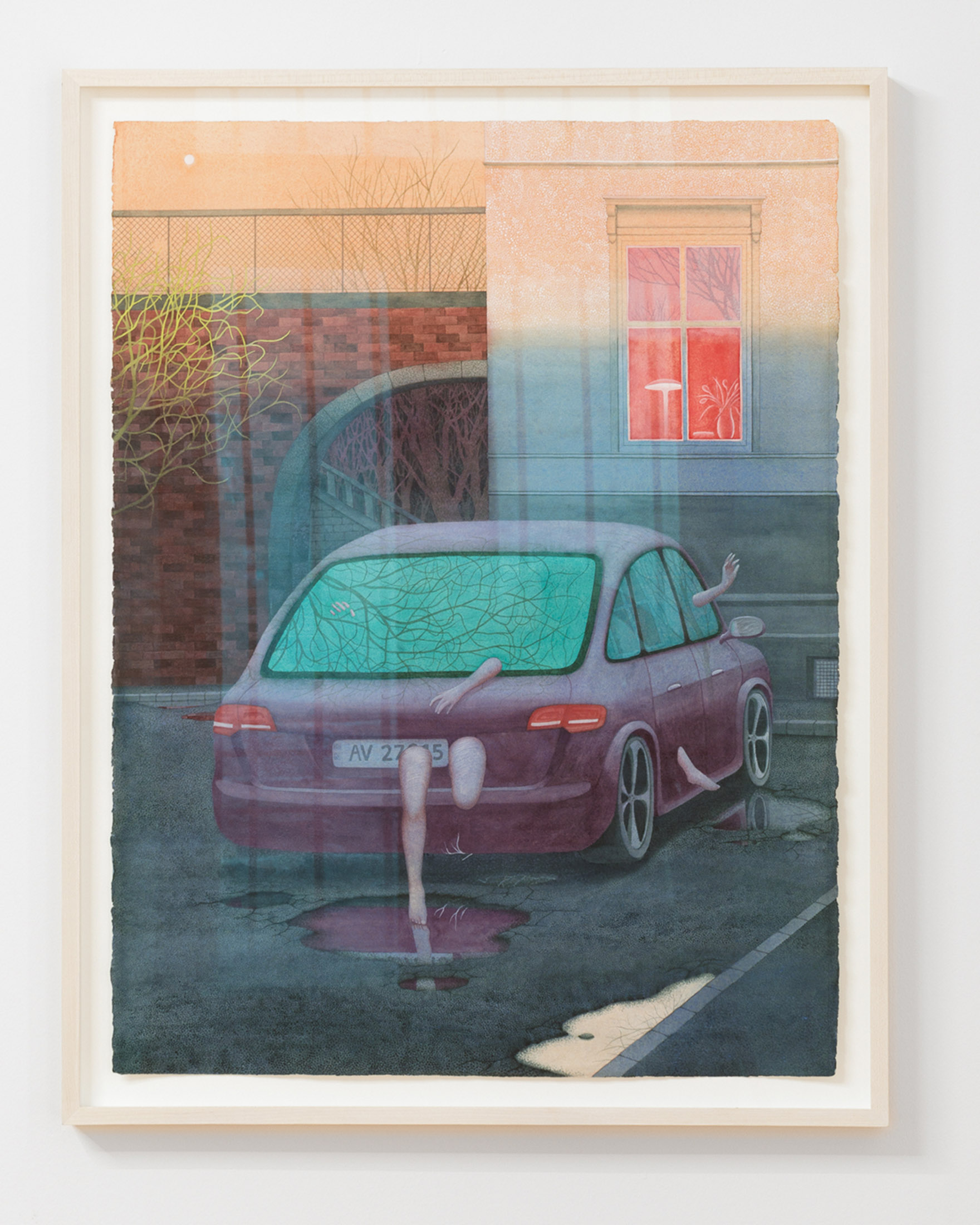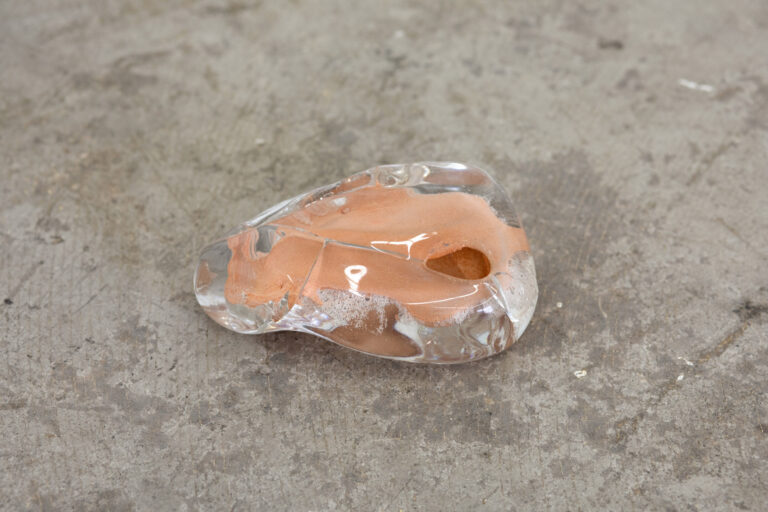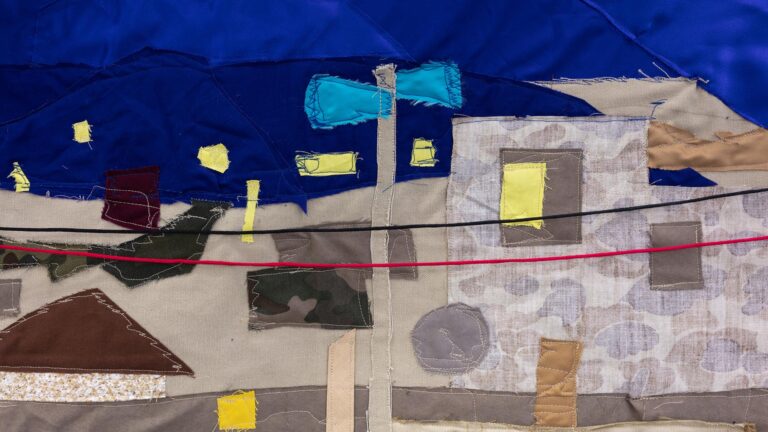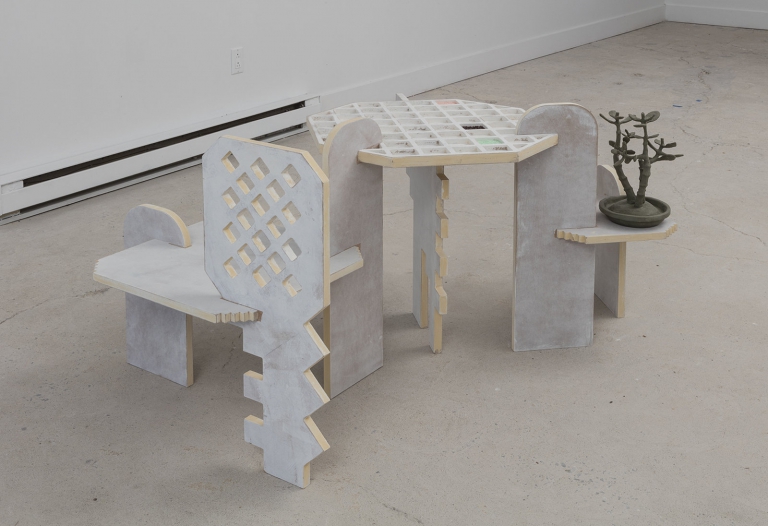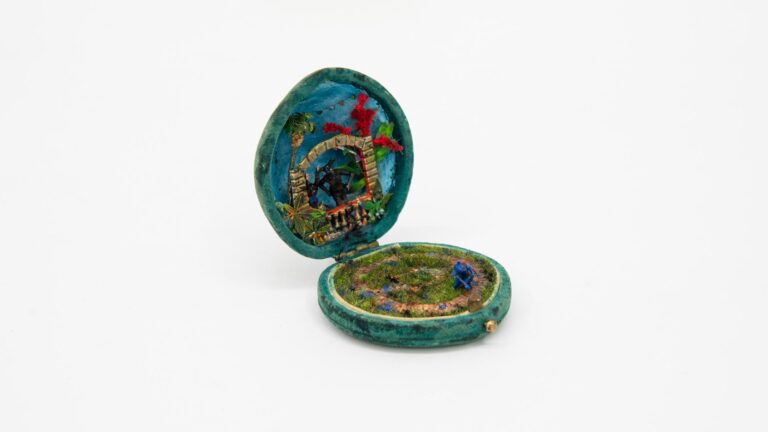Artist: Oda Iselin Sønderland
Exhibition title: Breaking the Waves
Venue: Pangée, Montreal, Canada
Date: June 3 – July 15, 2023
Photography: all images copyright and courtesy of the artist and Pangée, Montreal
When down her weedy trophies and herself
Fell in the weeping brook. Her clothes spread wide
And mermaid-like, awhile they bore her up;
Which time she chanted snatches of old tunes,
As one incapable of her own distress
― Hamlet, Act 4, Scene 7
Oda Iselin Sønderland’s exhibition, Breaking the Waves, at Pangée marks the Norwegian artist’s descent into previously uncharted psychological and visual depths. The works are visual sinkholes, gravitationally pulling the viewer inwards, downwards, and deeper. A car sinks into a body of water, a body submerges into a car, receding floor tiles draw viewers toward a mysterious green glow at the end of a tunnel. Sønderland plays with symbols of transit—tube stations, vehicles, and portals one may have visited in a dream.
In Breaking the Waves, Sønderland’s subject matter evolves from her years-long fascination with Norwegian folklore into a more personal mythology. Nokken, the water spirit luring one to the death by drowning, and Huldra, a beautiful creature whose songs entrance visitors into losing their way, are replaced by spirits drawn from the artist’s own psyche. What stands out in this new body of work is the emergence of the Ophelia archetype. Arms splayed open, head tilted back, the floating, lifeless body of a young woman is immediately synonymous with Shakes-peare’s tragic character, as immortalised by the Pre-Raphaelite painters. Ophelia is the symbol of innocence lost, female hysteria, and erotomania, the delusional condition often attributed to shy, sexually inexperienced women. Yet Sønder-land’s version of Ophelia differs from that of the Pre-Raphaelites; rather than a woman on the verge of death, she appears to be in a state of resurrection. In Forest, the floating woman bends her head back as if jolted awake, suspended in water, staring out with startling and supernaturally blue eyes. The unearthly quality of Sønder-land’s work is a subtle horror, like a human body moving in reverse. Her solitary, doll-like characters are in a state of transformation. Spiritual talismans pervade these works, fingers pointing to the heavens, the foreboding church organ in Hjertet, the winged young girl in Soprano. Yet the strongest symbol of transformation is Sønder-land’s use of water. Bodies of water serve as temples – liquid sanctuaries for meditation and renewal. When submerged, these subjects transcend their bodily containers.
Sønderland’s masterly watercolour technique and mythic narrative style evoke the egg-tem-pera panels of biblical scenes from the Early Renaissance. Thin washes of colour and steadfast detail suggest an artist’s almost maddening devotion. Sønderland trades-in Tuscan landscapes and saints for her own private allegories, set against backdrops of Euro-industrialism and Nordic forests. Hole-like ponds are filled with weedy trophies, emanating chanted snatches of old tunes. The reward for following Sønder-land’s practice is to bear witness to her world as it deepens from flatter, genial scenes to richer, haunting narratives riddled with complex femininity.
– Text by Claire Milbrath

